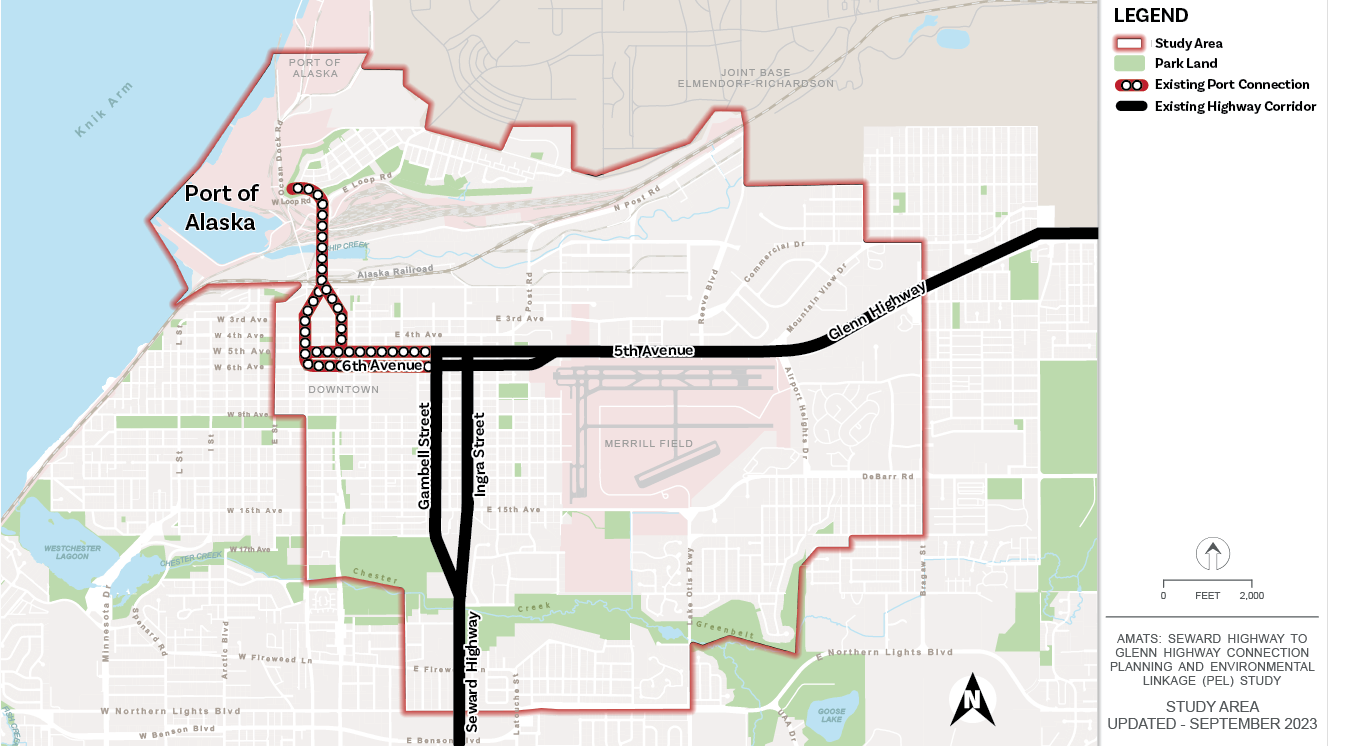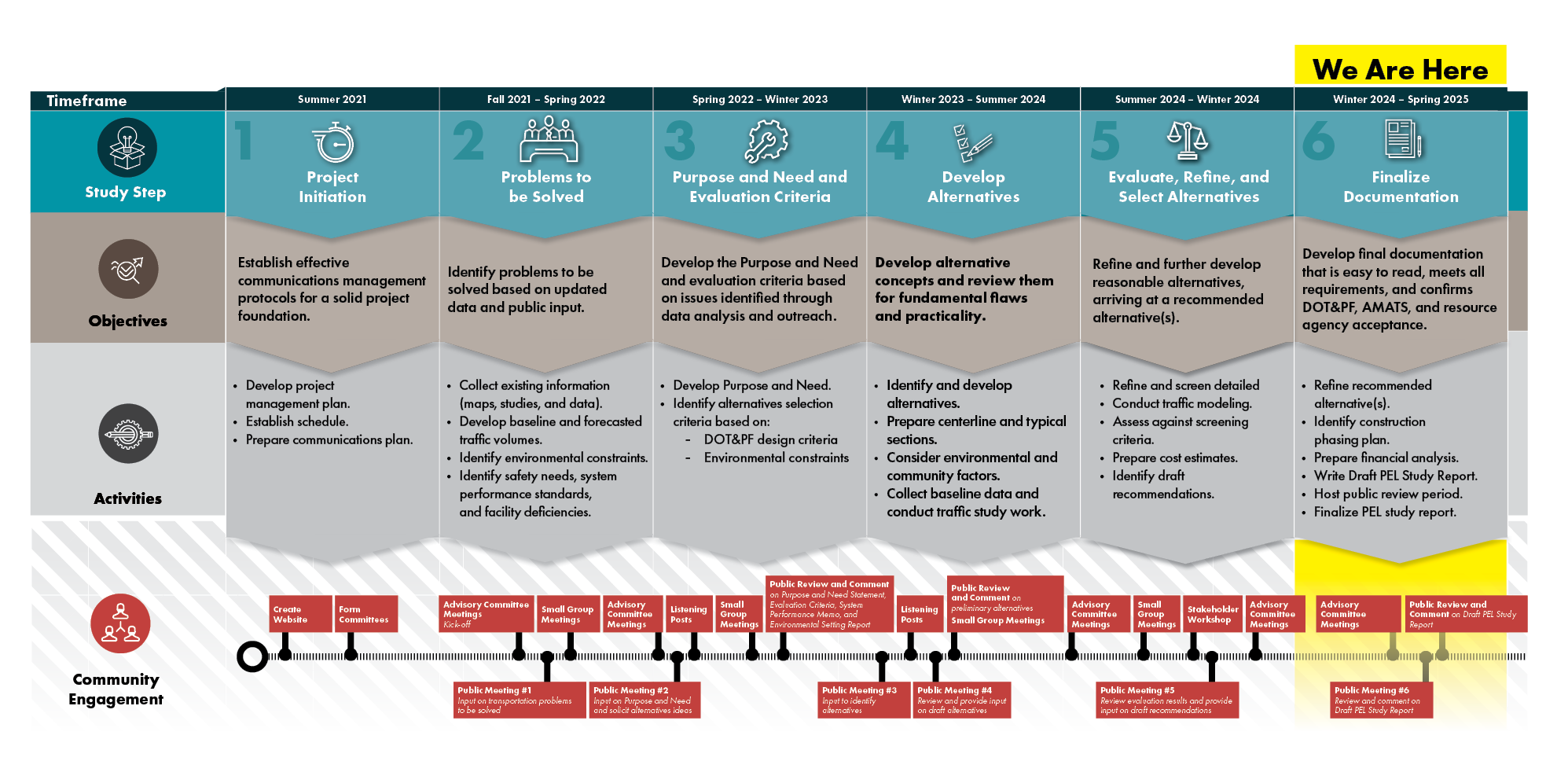Project Description

Study Description
The Alaska Department of Transportation and Public Facilities (DOT&PF), Central Region, is conducting a Planning and Environmental Linkages (PEL) Study to identify and evaluate options to improve safety, livability, regional travel between the Seward and Glenn Highways, and local travel within the surrounding neighborhoods. The study will also identify ways to improve access between the Port of Alaska and the highway network.
The study will build on past work in the area to develop long-term solutions to safety, livability, congestion, access, connectivity, and freight needs. It will result in an implementation plan that describes how the study recommendations can be phased, funded, and implemented, given competing statewide transportation priorities. Specific tasks include planning, environmental studies, traffic forecasting, travel demand modeling, development of a Purpose and Need Statement, alternatives development, cost estimating, implementation phasing, and public involvement.
Study Area
The study will identify and evaluate improvements needed to improve transportation safety, access, connectivity, and livability. The study area generally follows Bragaw Street on the east, Northern Lights Boulevard on the south, C Street on the west, and Joint Base Elmendorf-Richardson on the north . It includes areas where potential transportation improvements could be developed between the Glenn and Seward Highways and to and from the Port of Alaska. The study area is broad enough to also gauge how traffic levels on parallel routes may be affected.

Planning and Environmental Linkages (PEL) Study
The study is being prepared as a Planning and Environmental Linkages (PEL) Study. PEL studies represent a collaborative and integrated approach to transportation decision-making that considers environmental, community, and economic goals and impacts early in the transportation planning process and uses the information, analysis, and products developed during planning to inform the environmental review process. The PEL Study process reduces duplication, shortens the project delivery timeline, and refines the level of effort for future environmental review processes.
A PEL Study process is an approach to transportation decision-making that helps:
- Identify potential benefits and impacts on neighborhoods, the environment, and the economy early in the planning stage, making the project more efficient and cost-effective.
- Engage partner agencies, stakeholders, and the public to build project awareness and support through transparent and consistent communication.
- Provide opportunities early and often for the public to provide input that shapes the study.
- Narrow down the range of project alternatives to carry into future environmental review, design, and construction project steps.
- Produce better environmental outcomes.
- Facilitate better decision-making.
- Accelerate project delivery during subsequent environmental approvals.
Learn more about the PEL process in our  tab.
tab.
Schedule
The PEL Study process began in June 2021 and is expected to conclude in 2025. Please note that the dates in the graphic below are subject to change.
